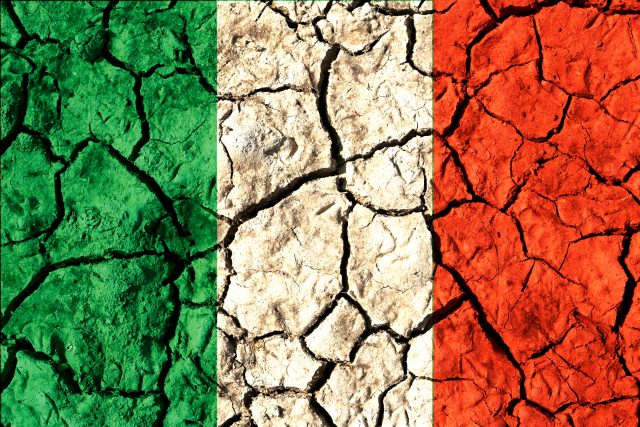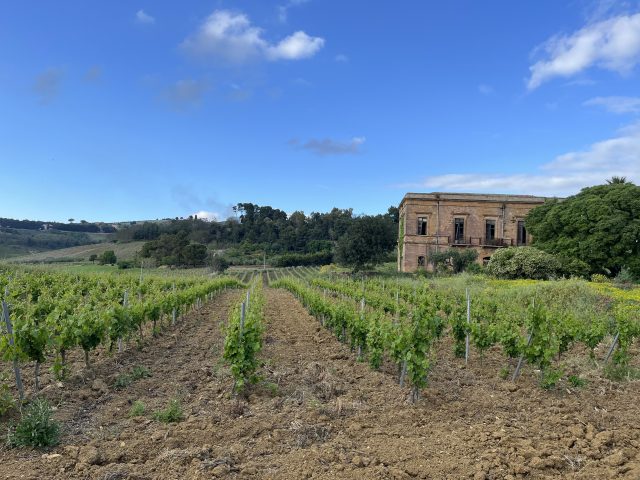Will heatwaves doom Italian viticulture?
As Italy grapples with the latest in a series of potentially record-breaking heatwaves, it raises questions about whether scorching summers could spell the end for Italian wine as we know it.

Cerberus, as this latest heatwave has been hellishly dubbed, has seen temperatures soar across Southern Europe, with tourists and locals alike suffering under the sun. In Rome, afternoon temperatures have remained around 40°C, a similarly sweltering picture to other cities across the country – with red alerts issued by the authorities to highlight the danger posed by these conditions.
Things are also heating up in wine country. The Times‘ recent apocalyptic headline Climate change threatens to burst Prosecco’s bubble may seem like alarmist hysteria, but extreme heat is a very real concern for those whose businesses rely on growing grapes – Cerberus’ bite could be even worse than its bark as water shortages and sunburnt grapes threaten future harvests. Pergolas, a traditional Italian vine training method which shades the fruit beneath a canopy of leaves, and early harvesting might not be enough to avert disaster.
Ivan Cappello is a winemaking consultant for Uva Sapiens and works with a number of estates across Italy, including Musita in Sicily (which db visited earlier this year), Prosecco powerhouse Bisol 1542, and Emilia Romagna’s La Mancina. Every working day he has to tackle the consequences of climate change in the vineyard, and on the wines produced.
In 2022, Northern Italy in particular was blighted by drought, and earlier this year it had the opposite problem when torrential rainfall caused mass flooding, especially around the Sangiovese vineyards of Romagna.
Speaking to the drinks business, Cappello reflected on how these recent climatic extremes have perhaps been a blessing in disguise: “Last summer there was a major heatwave in all Italy especially in the northern area, where the plants suffered more. The following winter was very rainy, but fortunately we had a good accumulation of water reserves that will allow us to deal with the heatwave of this summer.”
Despite the evening out of extremes, a prolonged period of rain followed by drought is unlikely to calm viticulturists’ nerves ahead of this year’s harvest. Given the increasing frequency of these conditions, those same viticulturists are also keeping a weather eye on harvests in years to come.
When asked what the long-term solution for winegrowers is, Cappello said: “The subject is very complex, climate change is fast, unfortunately much faster than the agricultural traditions of the many production areas. I believe that the primary solution is to be quick in changing one’s technical visions linked to the family agronomic tradition, therefore having the lucidity to understand that it is necessary to adapt to climate change, introducing new forms of vineyard management into the production context of one’s area that can help safeguard and improve the production situation.”
These solutions do not have to be rooted, so to speak, in modern technology – Cappello suggested that old vines, which have deeper roots, are more drought-resistant as they can reach water further down in the ground.
Another solution is using the right grapes: “The heat is a problem for all varieties, but as we know the native Italian varieties have a much more developed attitude to resistance than the others, I believe that Italian viticultural success also depends on this issue.”
Partner Content
But it’s not simply a case of relying on old vines and indigenous varieties – climate change is causing a shift in where’s best for vineyards to be planted.
Cappello suggested that increasing temperatures are driving a general push uphill: “The Italian wineries that use hill or mountain viticulture today have a great advantage. Wine experts are noticing a continuous search for areas higher in altitude.”
This phenomenon has been particularly notable in the region of Abruzzo, where growers are choosing to plant away from the Adriatic coast towards the mountains. In fact, the Consorzio Tutela Vini d’Abruzzo increased the altitude planting was permitted at from 600 metres above sea level to 800. In Alta Langa DOCG, Piemonte’s home of premium traditional method sparkling wines, 250 m.a.s.l. is the minimum altitude from which fruit can be sourced.
“In terms of latitude where it’s possible to bring the viticulture, an important international example is the attraction of Great Britain in the production of sparkling wines.” Perhaps it won’t be long before Italian sparkling producers follow the example of various Champagne houses and buy into the UK’s blossoming wine industry.
But it’s a more complex picture than simply the north being cooler, and therefore a more sustainability option for viticulture, than the south. While Sicily has sizzled as the mercury is projected to nudge 48°C this week, near to the European record temperature set in Siracusa in August 2021, Cappello noted that the influence of the Mediterranean Sea has acted as a crucial buffer, resulting in a wide diurnal range and morning mists in the west of the island, where Musita is based: “Despite the high temperatures and the increasingly hostile climate, I am convinced that the production of Sicily will not be affected by the climatic factor.”
Musita’s vineyards are also not cover cropped. At the time of db‘s visit in May, Cappello explained: “We don’t have any grass on the soil, so there is less competition with the roots of the vines.” He also mentioned that this move against cover cropping is also gaining popularity on the other end of the country in the vineyards Piemonte.

On the eastern side of Sicily, Etna has two key advantages when it comes to escaping the worst of the heat: altitude, and some pockets of pre-phylloxera ungrafted vines, which have proven to be highly drought-resistant in other parts of the world.
However, while his overall outlook on the long-term future of Italy’s wine industry in the face of climate change was a broadly positive one, Cappello was somewhat less optimistic about winegrowers receiving support from the government in the face of this crisis: “Unfortunately politics is a very slow machine, which hardly keeps up with the rhythms of nature. I can say that we need a long-term strategy, which envisages an improvement of ecosystems and biodiversity.”
Speaking with Cappello, it seems that Italy possesses enough of the tools required for coping with climate change – especially in terms of an abundance of indigenous grape varieties and plenty of high-altitude areas – but producers cannot rest on their vine leaves.
The viticultural map of Italy could profoundly change in the coming years as a direct consequence of this search for less hostile growing environments. If producers don’t opt for cooler plots, the bottom line seems to be that it is only going to become more difficult to create the ‘fresh’ and ‘balanced’ wines that consumers expect.
Related news
Bottega celebrates Unesco recognition of Italian cuisine




